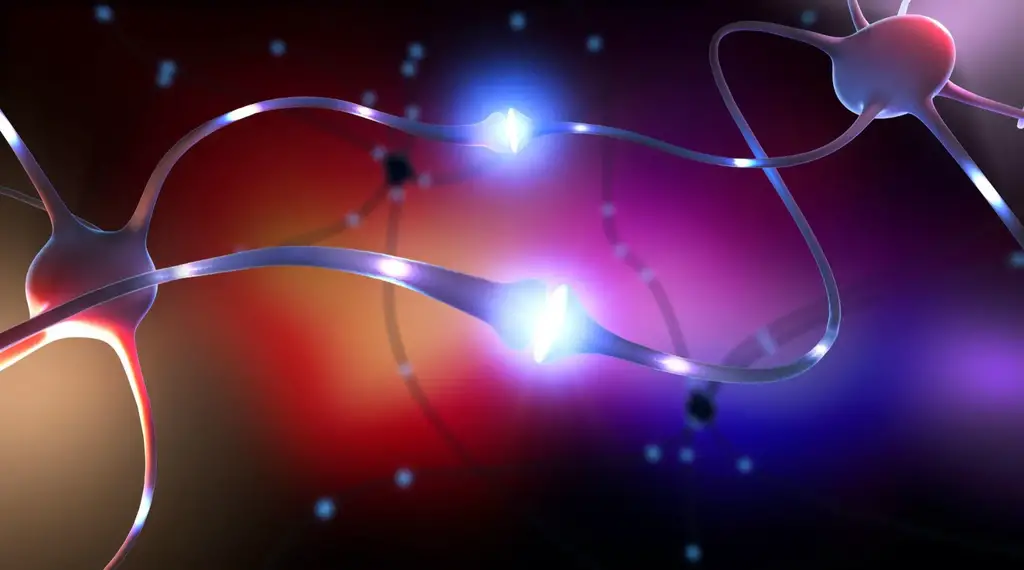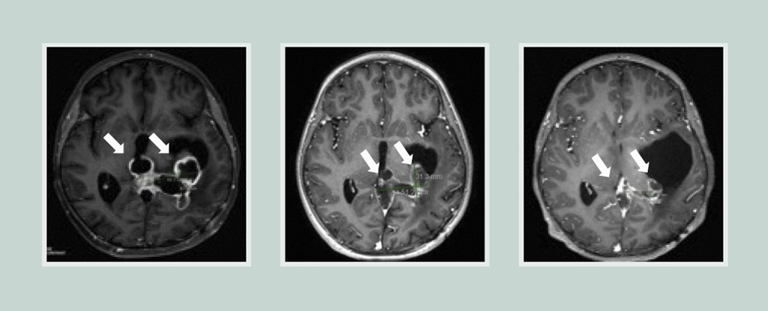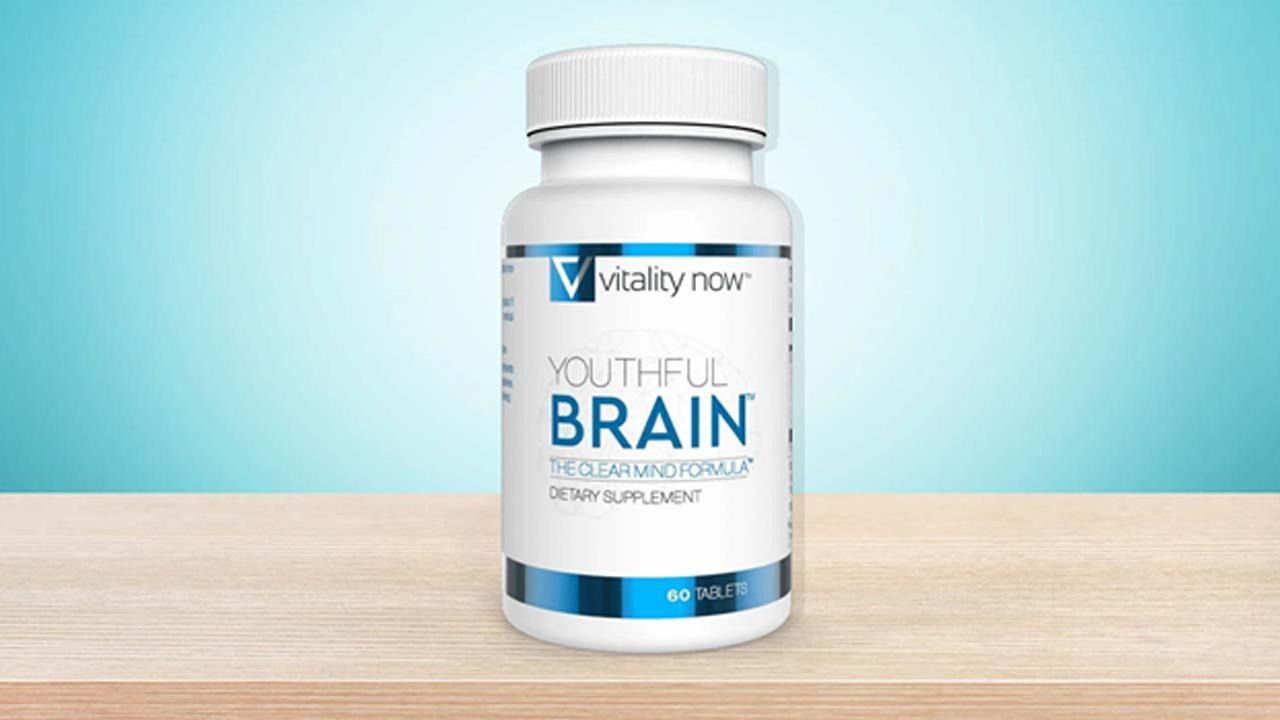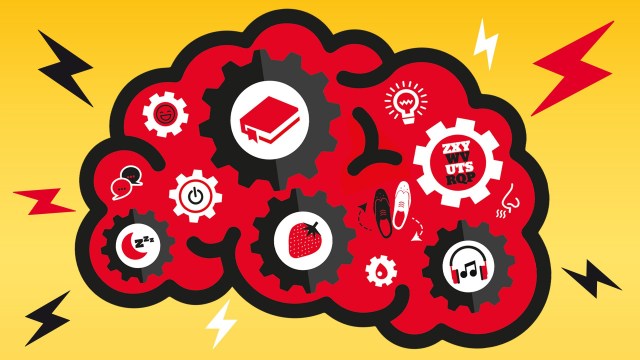Nature Knows and Psionic Success
God provides
Living model of brain reveals how human neurons work together to process information

“Dishbrain’ under the microscope. A microscopy image of neural cells where fluorescent markers show different types of cells. Green marks neurons and axons, purple marks neurons, red marks dendrites, and blue marks all cells. Where multiple markers are present, colors are merged and typically appear as yellow or pink depending on the proportion of markers. Credit: Cortical Labs A paper published in Nature Communications shows that when neurons are given information about the changing world around them (task-related sensory input) it changes how they behave, putting them on edge so that tiny inputs can then set off “avalanches” of brain activity, supporting a theory known as the critical brain hypothesis.
The researchers, from Cortical Labs and the University of Melbourne, used DishBrain, a collection of 800,000 human neural cells learning to play Pong.
It is the strongest evidence to date in support of a controversial theory of how the human brain processes information.
According to the critical brain hypothesis, big complex behaviors are only made possible when neurons are so on edge that tiny inputs can set off “avalanches” of brain activity .
This fine balanced state is known as a “neural critical” state, and lies between two extremes—the runaway excitation seen in disorders such as epilepsy, and a coma state where signals stall.
“It not only shows the network reorganizing into a near-critical state as it is fed structured information but that reaching that state also leads to better task performance,” says Dr. Brett Kagan, Chief Scientific Officer of biotech start-up Cortical Labs, which created DishBrain.
“The results are astonishing, way beyond what we thought we would achieve.”
The research adds a vital piece to the puzzle of the critical brain hypothesis.
Until now, there has been little experimental evidence demonstrating whether criticality is a general feature of biological neuronal networks or whether it is related to informational load.
“Our results suggest that near-critical network behavior emerges when the neural network is engaged in a task but not when left unstimulated,” says Dr. Kagan.
However, Dr. Kagan’s research shows that criticality alone is insufficient to drive learning by a neural network . “Learning requires a feedback loop , where the network is given additional information about the consequences of an action,” says Dr. Kagan.
The latest research underlines the potential for DishBrain to help unlock the secrets of the human brain and how it works, that is not possible with animal models.
“Usually to study the brain, especially on the scale of neurons, researchers have to use animal models, but in doing so, there are lots of difficulties and one can only have a limited number of subjects,” says first author Dr. Forough Habibollahi, a research fellow at Cortical Labs.
“So when I saw DishBrain’s unique ability to answer different types of questions in a way nobody else could, I was super excited to start this project and join the team.”
Doctors also see great potential for the research to help discover treatments for crippling brain diseases.
“The DishBrain criticality project has been an amazing collaborative experience between Cortical Labs, Biomedical Engineering and Neurology,” says paper author Dr. Chris French, leader of the Neural Dynamics Laboratory at the University of Melbourne’s Department of Medicine.
“The critical dynamics of the DishBrain neurons should provide key biomarkers for diagnosis and treatment of a range of neurological diseases from epilepsy to dementia,” he says.
By building a living model brain, scientists will be able to experiment using real brain function rather than flawed analogous models like a computer to not only explore brain function but to test how drugs affect it.
The research also has the potential to solve challenges facing brain-computer interfaces that could restore functions lost as a result of neural damage, says Professor Anthony Burkitt, an author on the paper and Chair of Bio Signals and Bio-Systems of the University of Melbourne’s Biomedical Engineering Department.
“A key feature of the next generation of neural prostheses and brain-computer interfaces that we currently researching involves utilizing real-time closed loop strategies,” he says. “So the results of this study could have important implications for understanding how these control and stimulation strategies interact with the neural circuits in the brain.”
“This field of biological brain modeling is in its infancy but opens the way for a whole new area of science,” Dr. Kagan says.
Provided by University of Melbourne
Zapping the brain can ‘excite’ learning abilities, improve math skills
(© sdecoret – stock.adobe.com) GUILDFORD, United Kingdom — Countless students struggle with the unforgiving numerical formulas that make up so much of complex mathematics, but fascinating new research suggests a form of neurostimulation may help promote improved mathematical learning among those who habitually struggle with numbers and fractions.
Scientists from the Universities of Surrey and Oxford, Loughborough University, and Radboud University in the Netherlands all collaborated to put this unique project together. More specifically, study authors analyzed and investigated the impact of neurostimulation on learning. While more and more scientists have begun to express interest in neurostimulation as a non-invasive neurological technique, far too little is known about its possible neurophysiological side-effects and potential impact on learning.
Neurostimulation , generally speaking, can refer to numerous techniques centered on direct stimulation of the nervous system, usually through electrical currents, in an effort to modify or manage nervous system activities. For this study specifically, researchers chose to use electrical noise stimulation, which is a form of neurostimulation characterized by randomized electrical pulses .
Notably, this led to the finding that electrical noise stimulation over the frontal part of the brain appears to improve mathematical skills among people whose brains showed signs of being less excited by mathematics prior to the application of the stimulation. However, the team did not see any math improvements in others who already had a high level of brain excitation during the initial assessment or in the placebo groups. With all of this in mind, the research team theorizes electrical noise stimulation acts on the sodium channels in the mind, consequently interfering with the cell membrane of neurons, ultimately increasing cortical excitability. (Credit: Katerina Holmes from Pexels) “ Learning is key to everything we do in life – from developing new skills, such as driving a car, to learning how to code. Our brains are constantly absorbing and acquiring new knowledge,” says study leader Professor Roi Cohen Kadosh, Professor of Cognitive Neuroscience and Head of the School of Psychology at the University of Surrey, in a media release .
“Previously, we have shown that a person’s ability to learn is associated with neuronal excitation in their brains . What we wanted to discover in this case is if our novel stimulation protocol could boost, in other words excite, this activity and improve mathematical skills.”
To conduct this research, the researchers recruited 102 volunteers. They assessed mathematical skills using a series of multiplication problems. Participants were then split into four cohorts. The first two consisted of a learning group exposed to high-frequency random electrical noise stimulation and an over-learning group in which participants practiced their multiplications “beyond the point of mastery” with high-frequency random electrical noise stimulation .
The other two cohorts, consisting of a learning and over-learning group, were exposed to a placebo condition or an experience just like real stimulation without the actual application of significant electrical currents. Additionally, scientists took EEG recordings at the beginning and at the end of the stimulation to gauge brain activity .
“These findings highlight that individuals with lower brain excitability may be more receptive to noise stimulation, leading to enhanced learning outcomes, while those with high brain excitability might not experience the same benefits in their mathematical abilities,” explains Dr. Nienke van Bueren from Radboud University, who led this work under Professor Cohen Kadosh’s supervision.
“What we have found is how this promising neurostimulation works and under which conditions the stimulation protocol is most effective. This discovery could not only pave the way for a more tailored approach in a person’s learning journey but also shed light on the optimal timing and duration of its application,” Prof. Kadosh concludes.
The study is published in the journal PLoS Biology. You might also be interested in:
Children News Longer Life News Français
“Ebb and Flow” Brain Mechanism Discovered – Study Challenges Traditional Views on Role of Dopamine in Learning

New research reveals that learning in the brain occurs not just when there are external rewards like food or money, but also naturally through the constant ebb and flow of dopamine and acetylcholine. The researchers found that this hormonal balancing act is ongoing and independent of rewards, potentially offering new insights into neuropsychiatric conditions. The findings could explain how memories form throughout the day.
Scientists have long believed that rewards such as food or money stimulate learning by triggering the release of dopamine, a hormone associated with pleasure and positive reinforcement. However, a recent rodent study suggests that learning can still happen even when there is no immediate reward involved.
Conducted by a team from NYU Grossman School of Medicine , the study examined the interaction between dopamine and acetylcholine, another brain chemical involved in learning and memory. Previous studies indicated that these two hormones have an inverse relationship; an increase in one leads to a decrease in the other. It was previously thought that rewards facilitate learning by simultaneously elevating dopamine levels while reducing acetylcholine.
This sudden hormone imbalance is believed to open a window of opportunity for brain cells to adjust to new circumstances and form memories for later use. Known as neuroplasticity, this process is a major feature of learning as well as recovery after injury. However, the question remained whether food and other external rewards are the only drivers for this memory system, or whether our brains instead are able to create the same conditions that are favorable to learning without outside help.
To provide some clarity, the study authors focused on when and under what circumstances dopamine levels are high at the same time as acetylcholine levels are low. They found that this situation occurs frequently, even in the absence of rewards. In fact, it turns out that the hormones constantly ebb and flow in the brain, with dopamine levels regularly raised while acetylcholine levels are low, setting the stage for continual learning.
“Our findings challenge the current understanding of when and how dopamine and acetylcholine work together in the brain,” said study lead author Anne Krok, PhD. “Rather than creating unique conditions for learning, rewards take advantage of a mechanism that is already in place and is constantly at work,” added Krok, who is also a medical student at NYU Grossman School of Medicine.
For the research, which was recently published in the journal Nature , the study team gave dozens of mice access to a wheel on which they could run or rest at will. On occasion, the researchers offered the animals a drink of water. Then they recorded rodent brain activity and measured the amount of dopamine and acetylcholine released at different moments.
As expected, the drink treats created the typical patterns of dopamine and acetylcholine release that are prompted by rewards. However, the team also observed that well before receiving water treats, dopamine, and acetylcholine already followed “ebb and flow” cycles approximately twice every second, during which the levels of one hormone dipped while the other surged. Krok notes that this pattern continued regardless of whether the rodents were running or standing still. Similar brain waves have been observed in humans during periods of introspection and rest, she adds.
“These results may help explain how the brain learns and rehearses on its own, without the need for external incentives,” said study senior author and neuroscientist Nicolas Tritsch, Ph.D. “Perhaps this pulsing circuit triggers the brain to reflect on past events and to learn from them.”
That said, Tritsch, an assistant professor in the Department of Neuroscience and Physiology at NYU Langone Health, cautions that their research was not designed to tell whether mouse brains process information the same way as human brains do during this “self-driven” learning, as he describes it.
Nevertheless, he says, the results of the study may also offer insight into new ways of understanding neuropsychiatric conditions that have been tied to incorrect levels of dopamine, such as schizophrenia, attention-deficit/hyperactivity disorder (ADHD), and depression.
In schizophrenia, for example, patients often experience delusions that contradict reality. If the dopamine-acetylcholine circuit is constantly strengthening connections in the brain, says Tritsch, then problems with this mechanism might lead to the formation of too many, and incorrect, connections, causing them to “learn” of events that did not really occur.
Similarly, lack of motivation is a common symptom of depression, making it challenging to perform basic tasks such as getting out of bed, brushing teeth, or going to work. It is possible that a disruption in the internal-drive system might be contributing to these issues, the authors say.
As a result, Tritsch says the research team next plans to examine how dopamine-acetylcholine cycles behave in animal models of such mental illnesses, as well as during sleep, which is important for memory consolidation.
Reference: “Intrinsic dopamine and acetylcholine dynamics in the striatum of mice” by Anne C. Krok, Marta Maltese, Pratik Mistry, Xiaolei Miao, Yulong Li and Nicolas X. Tritsch, 9 August 2023, Nature .
DOI: 10.1038/s41586-023-05995-9
Funding for the study was provided by National Institutes of Health grants DP2NS105553, R01MH130658, T32NS086750, T32GM007308, and T32GM136573. Further funding was provided by the Alfred P. Sloan Foundation, the Danna Foundation, the Whitehall Foundation, the Feldstein Medical Foundations, and the Vilcek Scholars Award.
In addition to Krok and Tritsch, other investigators involved in the study were Marta Maltese, Ph.D.; Pratik Mistry, MS; at NYU Langone, and Xiaolei Miao, Ph.D.; and Yulong Li, Ph.D., at Peking University School of Life Sciences in Beijing.
Can’t learn math? Try exciting your brain – study

Large numbers of pupils and university students are not excited about the prospect of studying mathematics , yet researchers in the UK and the Netherlands have found that exciting a brain region using electrical-noise stimulation can help improve mathematical learning in those who struggle with the subject.
During this unique study, researchers investigated the impact of neurostimulation on learning. Despite the growing interest in this non-invasive technique, little is known about the neurophysiological changes induced or the effect it has on learning. How can you stimulate your brain to be better at math?
Previous research has highlighted the role of the excitation/inhibition ratio for typical and atypical development, mental health, cognition, and learning. Other research has highlighted the benefits of high-frequency random-noise stimulation – an excitatory form of neurostimulation – on learning.
Researchers found that electrical noise stimulation over the frontal part of the brain improved the mathematical ability of people whose brain was less excited (by mathematics) before the application of stimulation. No improvement in mathematical scores was identified in those who had a high level of brain excitation during the initial assessment or in the placebo groups. Researchers believe that electrical noise stimulation acts on the sodium channels in the brain, interfering with the cell membrane of the neurons, which increases cortical excitability.
Study leader and cognitive neuroscience Prof. Roi Cohen Kadosh, who earned his doctorate in neuropsychology at Ben-Gurion University of the Negev and who is now head of the School of Psychology at the University of Surrey, said: “Learning is key to everything we do in life – from developing new skills like driving a car to learning how to code. Our brains are constantly absorbing and acquiring new knowledge. Previously, we showed that a person’s ability to learn is associated with neuronal excitation in their brains. What we wanted to discover in this case is whether our novel stimulation protocol could boost, in other words excite, this activity and improve mathematical skills.”
An illustrative image of a brain. (credit: INGIMAGE)
He was assisted by Dr. Nienke van Bueren from the UK’s Radboud University, who was co-leader under Cohen Kadosh’s supervision. They published their findings in the journal PLOS Biology under the title “Human neuronal excitation/inhibition balance explains and predicts neurostimulation induced learning benefits.”
A total of 102 participants were recruited and their math skills assessed through a series of multiplication problems. Participants were then split into four groups – a learning group exposed to high-frequency random electrical-noise stimulation, an overlearning group in which participants practiced the multiplication beyond the point of mastery with high-frequency, random electrical-noise stimulation. The remaining two groups consisted of a learning and overlearning group, but they were exposed to a placebo condition, an experience akin to real stimulation without applying significant electrical currents. EEG recordings were taken at the beginning and at the end of the stimulation to measure brain activity.
The findings proved that individuals with lower brain excitability may be more receptive to noise stimulation, leading to enhanced learning outcomes, while those with high brain excitability might not experience the same benefits in their mathematical abilities, the authors wrote.
“What we have found is how this promising neurostimulation works and under which conditions the stimulation protocol is most effective,” Cohen Kadosh concluded. “This discovery could not only pave the way for a more tailored approach in a person’s learning journey but also shed light on the optimal timing and duration of its application.”
Can’t learn math? Try exciting your brain – study

Large numbers of pupils and university students are not excited about the prospect of studying mathematics , yet researchers in the UK and the Netherlands have found that exciting a brain region using electrical-noise stimulation can help improve mathematical learning in those who struggle with the subject.
During this unique study, researchers investigated the impact of neurostimulation on learning. Despite the growing interest in this non-invasive technique, little is known about the neurophysiological changes induced or the effect it has on learning. How can you stimulate your brain to be better at math?
Previous research has highlighted the role of the excitation/inhibition ratio for typical and atypical development, mental health, cognition, and learning. Other research has highlighted the benefits of high-frequency random-noise stimulation – an excitatory form of neurostimulation – on learning.
Researchers found that electrical noise stimulation over the frontal part of the brain improved the mathematical ability of people whose brain was less excited (by mathematics) before the application of stimulation. No improvement in mathematical scores was identified in those who had a high level of brain excitation during the initial assessment or in the placebo groups. Researchers believe that electrical noise stimulation acts on the sodium channels in the brain, interfering with the cell membrane of the neurons, which increases cortical excitability.
Study leader and cognitive neuroscience Prof. Roi Cohen Kadosh, who earned his doctorate in neuropsychology at Ben-Gurion University of the Negev and who is now head of the School of Psychology at the University of Surrey, said: “Learning is key to everything we do in life – from developing new skills like driving a car to learning how to code. Our brains are constantly absorbing and acquiring new knowledge. Previously, we showed that a person’s ability to learn is associated with neuronal excitation in their brains. What we wanted to discover in this case is whether our novel stimulation protocol could boost, in other words excite, this activity and improve mathematical skills.”
An illustrative image of a brain. (credit: INGIMAGE)
He was assisted by Dr. Nienke van Bueren from the UK’s Radboud University, who was co-leader under Cohen Kadosh’s supervision. They published their findings in the journal PLOS Biology under the title “Human neuronal excitation/inhibition balance explains and predicts neurostimulation induced learning benefits.”
A total of 102 participants were recruited and their math skills assessed through a series of multiplication problems. Participants were then split into four groups – a learning group exposed to high-frequency random electrical-noise stimulation, an overlearning group in which participants practiced the multiplication beyond the point of mastery with high-frequency, random electrical-noise stimulation. The remaining two groups consisted of a learning and overlearning group, but they were exposed to a placebo condition, an experience akin to real stimulation without applying significant electrical currents. EEG recordings were taken at the beginning and at the end of the stimulation to measure brain activity.
The findings proved that individuals with lower brain excitability may be more receptive to noise stimulation, leading to enhanced learning outcomes, while those with high brain excitability might not experience the same benefits in their mathematical abilities, the authors wrote.
“What we have found is how this promising neurostimulation works and under which conditions the stimulation protocol is most effective,” Cohen Kadosh concluded. “This discovery could not only pave the way for a more tailored approach in a person’s learning journey but also shed light on the optimal timing and duration of its application.”
Daily 20-minute walks can help keep your heart healthy, experts reveal

Advertisement Karen Kingston speaks out in exclusive first interview after nerve-wracking close calls in Mexico 12 ways liberals are literally committing MASS SUICIDE Elizabeth Rattray and Karen Johnson sound alarm over toxic waste dumping and incineration in Ohio Advertisement
According to a study published in the journal Circulation , fewer than one in four adults achieves the amount of physical activity recommended by researchers and health experts. Many adults report low levels of physical activity, which is a common feature among individuals with elevated risk factors for cardiovascular disease (CVD). In order to prevent or treat CVD, studies show that regular exercise needs to be incorporated into a healthy lifestyle.
Physical inactivity increases your risk of heart disease because it contributes to the buildup of plaque in the arteries . Plaque can cause the arteries to narrow or stiffen – a condition known as atherosclerosis – resulting in decreased blood flow to the heart. If left untreated, this can eventually lead to a heart attack or damage the heart muscle, which inevitably leads to heart failure.
CVD is the leading cause of death globally, but according to the World Heart Federation, it can be prevented by following a healthy diet , avoiding tobacco, maintaining a healthy weight and being physically active. Current guidelines recommend doing 150 to 300 minutes of moderate-intensity physical activity or at least 75 to 150 minutes of vigorous physical activity weekly, or an equivalent combination of both, in addition to muscle-strengthening activities at least twice a week. While this may seem daunting for many, the benefits of being physically active, particularly for cardiovascular health, are well-documented by studies.
Fortunately, recent investigations show that even low levels of physical activity – lower than the recommended amount, that is – can still provide substantial cardiovascular benefits. In fact, the American Heart Association suggests that something as simple as a daily 20-minute walk could reduce the harmful effects of an inactive lifestyle on your heart. (Related: Do these exercises in the morning to boost your heart function and reduce your risk of heart disease and stroke .) The dangers of a sedentary lifestyle
Low physical activity levels are believed to be influenced by various factors , such as traffic congestion, air pollution, a shortage of parks or pedestrian walkways, and a lack of sports or leisure facilities. Television, computers and cell phones also contribute to the increasingly sedentary lifestyle observed in modern society.
Unfortunately, many people are unaware of the fact that physical inactivity is the fourth leading risk factor for global mortality. Research has found that a sedentary lifestyle is strongly associated not only with many chronic conditions , such as CVD, diabetes mellitus and cancer, but also premature death. Lack of physical activity is also associated with an elevated risk of developing metabolic disorders , such as hypertension, dyslipidemia and obesity.
Sedentary behavior is closely linked to the prevalence of cancer . A Canadian study investigated the correlation between sedentary behavior and cancer prevalence and found that cancer risk is 13 percent higher among individuals with the longest sedentary time compared to those with the shortest sedentary time. A separate study also reported that being sedentary for long periods can increase your overall cancer risk by 20 percent.
In older women, sedentary behavior has also been negatively associated with bone mineral density . A European study reported that bone mineral density is correlated with the duration, not the frequency, of sedentary behavior. Older women who spend more time being sedentary tend to have lower bone mineral density than physically active women. Loss of bone mineral density, which also occurs as a consequence of age-related estrogen decline, leads to osteoporosis .
Prolonged sedentary time has also been correlated with chronic knee pain . Studies show that the incidence of chronic knee pain is higher in individuals with longer sedentary times. In particular, being sedentary for more than 10 hours a day is markedly correlated with chronic pain in the knees. (Related: Not all pain should be treated with NSAIDs .)
Mentally passive sedentary behaviors, such as television viewing, sitting, listening to music and talking while sitting, have also been positively correlated with depression risk . Researchers believe that sedentary behaviors increase depression risk by either blocking direct communication and lowering social interactions or by reducing the available time a person has to engage in physical activities that help prevent or treat depression .
Interestingly, mentally active sedentary behaviors, such as reading books or newspapers, driving, attending a meeting or knitting and sewing, do not seem to increase a person’s risk of depression. Nevertheless, studies show that being sedentary does not provide any benefits, but being physically active eliminates the increased risk of death from serious health issues associated with longer sitting times.
A sedentary lifestyle has also been found to cause unfavorable changes in cognitive function , while a healthy lifestyle that includes regular physical activity has been shown to offer brain benefits . Reduce your risk of heart disease by being physically active
According to Daniel Lackland, a professor and cardiovascular disease researcher at the Medical University of South Carolina , people who are completely inactive will benefit the most from adding a 20-minute walk to their daily routine. This short bout of physical activity can help improve risk factors for CVD, such as body weight, blood pressure and blood sugar.
While walking is the simplest heart-healthy exercise that you can do, you don’t have to limit yourself to just that. You can get creative and explore other activities, such as cycling, swimming or jogging. Climbing the stairs in your office building or even doing fitness routines while you’re sitting can also help improve your heart health tremendously.
Lackland also said that you don’t need to do the 20 minutes all at once. If you’re busy, you can break your walk into two or even five separate walks over the course of a day and the results will be the same.
“Certainly, the more exercise and rigorous the activity, typically the better [it will be] for cardiovascular health,” […]
7 Ways to Stimulate Your Brain as You Age

Experts share proven ways to promote better brain health at every age. AJ_Watt / GETTY IMAGES As we age, our brain experiences both structural and functional changes. Over time, this can cause a decline in cognitive abilities, our memory, and even emotional regulation. Certain lifestyle factors can speed up an aging brain, and our genetics also play a role. The good news? Engaging in activities that stimulate your brain can help curb these issues.
“Much like muscle and that old saying ‘if you don’t use it you lose it,’ using your brain can help protect it, to an extent, from some typical memory decline and slowing,” says Carrie Ditzel , PhD, director of geropsychology and neuropsychology at Baker Street Behavioral Health.
The benefits of brain stimulation include improved mental sharpness, increased protection from decline, and an overall sense of wellness, says Ditzel. Taking intentional action to address brain health puts control back in your hands, she says, which is very reassuring and can even help motivate you to continue prioritizing your health.
Start with these effective brain-stimulating strategies and activities. Meet Our Expert
Carrie Ditzel , PhD , holds a doctoral degree in clinical psychology, specializing in geropsychology and treating the impact of medical conditions on mental health.
Nadia Kumentas , NMD , is a doctor of naturopathic medicine with Muse.
Poonam Desai , MD , is an emergency room doctor and longevity expert based in New York City.
Move Your Body in Healthy Ways
You know that exercise is one of the best things you can do for your body, but did you know it can benefit your brain as well? Ditzel says to pick an activity you enjoy that specifically targets your heart and cardiovascular system. This might be brisk walks, yoga or pilates, weight lifting, or swimming.
“Reframe your thinking around working out from just weight loss or muscle toning to brain health, as well,” says Ditzel. “Often, we lose motivation to work out if we aren’t seeing results with pounds shedding from the scale, but if you can remind yourself that every time you exercise you are giving your brain a booster shot and potentially protecting it from cognitive decline, then you may find some more motivation and feel positively about the activity.”
Related: 10 Best Low-Impact Activities to Try at Any Age Listen to Different Types of Music
madelyn mulvaney / GETTY IMAGES Listening to music instantly impacts your mood, and it’s also been tied to brain health. “Engaging with various styles of music has been shown to have multifaceted effects on both emotional and cognitive functions of the brain,” says Nadia Kumentas , NMD, a doctor of naturopathic medicine with Muse. It can impact the learning and memory processes, foster the development of auditory skills, and improve attention and memory, making it a valuable practice for overall brain health.
Try creating playlists with diverse genres that cater to different moods and activities, and utilizing music throughout your day to uplift and energize. “Have uplifting tunes for exercise, calming music for relaxation, and inspiring tracks for creative work,” says Dr. Kumentas. Call a Friend
Humans are social creatures—even the most introverted among us. Nourishing and maintaining healthy relationships with friends and family is an excellent way to stimulate your brain and feel better all around.
“Healthy relationships are important, especially as we age, for numerous reasons,” says Poonam Desai , MD, an emergency room doctor and longevity expert based in New York City. “They can provide support, which is crucial with transitions and health changes that occur with aging, and reduce isolation. Loneliness can lead to depression, which can lead to reduced physical activity and reduced nutrient intake.”
Spending time with others also provides a sense of purpose and belonging, and even everyday conversations and discussions can prove highly stimulating.
Related: 18 Creative Scrapbook Ideas to Preserve Your Family Memories Grab a Book
Farknot_Architect / GETTY IMAGES Put the phone down and grab a book. Whether you prefer a steamy romance novel, a fascinating piece of nonfiction, or a moody mystery, reading boasts tons of benefits for your brain. It inspires critical thinking, expands vocabulary and language, improves concentration, and aids memory as you follow plot lines and retain and recall new information. Manage Your Stress
Poorly managed chronic stress can take a serious toll on your nervous system, as well as your emotional and mental health. Research shows it can also negatively impact your physical well-being.
“When stress is high, we are at risk for higher feelings of anxiousness and sadness, both of which can lead to things like poor appetite, poor sleep, and changes in our concentration and attention,” says Ditzel. “If aging is already impacting your cognition, stress can just exacerbate those difficulties.”
Her suggestion is to keep a mental note of your stress levels. Figure out what triggers your stress and what activities help reduce those feelings. Also think back to what activities brought you joy and minimized anxiety in the past. Find Hobbies That Create a Sense of Purpose
Getty Images Feeling a strong sense of purpose is a crucial part of the human experience, and arguably even more so as we age.
“As we say goodbye to some of the roles and responsibilities we held earlier in life—like caring for children or our occupations—we are susceptible to withdrawal and being underwhelmed, and potentially understimulated with life,” says Dr. Ditzel. “This can be a risk factor for poor cognitive health.”
Her advice is to find something you enjoy and carve out dedicated time to the hobby. It doesn’t have to be something new or grand in scope, but rather something that gives you a feeling of accomplishment. Maybe it’s taking a class, dabbling in a new craft, volunteering, or starting a garden.
Related: 10 Hobbies for Older Adults That Improve Brain and Body Health Allow for Some Downtime
While boredom is often viewed as a negative state of mind, Dr. Kumentas says that research has found that this downtime may actually trigger enhanced creativity, self-reflection, and problem-solving skills.”For instance, studies […]
New Drug Can Help Treat Aggressive, Deep-Rooted Brain Tumors

Scientists have discovered great potential in an up-and-coming drug that targets an aggressive form of brain cancer .
Called diffuse midline gliomas (DMGs), these deep-rooted brain tumors often develop in childhood, and there are currently no effective treatments available to tackle them.
Part of the challenge has been finding drugs that can cross from the blood into the brain in sufficient concentrations.
One drug, called ONC201, has shown promise for other kinds of tumors in the nervous system. Following research suggesting it could be effective against a DMG with a specific mutation, an international team of researchers has carried out a trial putting the dopamine receptor blocker to the test.
Two clinical studies were carried out on groups of volunteers – one consisting of 30 children and adolescents with DMG, the other of 40 individuals that included adults.
The median overall survival time with ONC201 treatment was 22 months for tumors that didn’t recur, with almost a third of patients living for over two years. That compares with a median overall survival time of 11-15 months without treatment.
“Prior to this study, there have been more than 250 clinical trials that have not been able to improve outcomes,” says pediatric neuro-oncologist Carl Koschmann from the University of Michigan in the US. “These results are potentially a major crack in the armor.”
Researchers had previously looked at ONC201 as a cancer drug because of the way it targets neural pathways for the chemical messenger dopamine – pathways that are often more abundant in tumors.
Previously, ONC201 had shown promise when treating DMGs with the H3K27M mutation. Earlier studies also showed that the compound could pass through the blood-brain barrier, a built-in biological safety net for our brains that makes delivering drugs to brain tumors particularly difficult.
That prompted this latest study, a phase 1 clinical trial . The team collected cerebrospinal fluid from patients to try and get a better idea of what ONC201 was doing – and it was discovered that it affected the mitochondria (or power plants) of the cancer cells, increasing levels of a metabolite called L-2HG.
As a result, the epigenetic signals (like on/off switches for specific genes) associated with the tumor that help drive its rapid spread were reversed back closer to what they would be in normal cells. The longer the treatment went on for, the greater this reversal was.
“This could explain why this patient population was responding so well to the drug, because it had this specific epigenetic abnormality that could be turned off by ONC201,” says neuropathologist Sriram Venneti from the University of Michigan.
While we’re still a long way from a cure for DMG cancer, the signs are good that we now have a compound that can get past this tumor’s defenses. More clinical trials are already underway, testing how ONC201 might work in combination with other treatments.
Right now, radiation therapy is the go-to treatment for this kind of cancer – but in an area as delicate as the brain, there can be a lot of collateral damage, which is why scientists are searching for a more precise, targeted option.
“It’s an incredibly difficult tumor to treat,” says Koschmann.
The research has been published in Cancer Discovery .
Lion’s mane mushroom compounds found to boost memory and nerve growth in new study

Researchers have found that compounds from the lion’s mane mushroom, particularly hericene A, promote nerve cell growth, increase the production of brain-boosting molecules called neurotrophins, and improve memory performance in mice, suggesting their potential as cognitive enhancers. Their findings have been published in the Journal of Neurochemistry .
The study was motivated by the desire to explore the potential cognitive-enhancing effects of compounds found in the edible mushroom Hericium erinaceus , commonly known as lion’s mane mushroom. This mushroom has been traditionally used in Asian countries for various health benefits, including its potential effects on brain health and memory. The researchers aimed to scientifically determine the effects of these compounds, with a specific focus on nerve growth and memory-related processes.
“Natural products have been fashioned by millions of years of evolution, which have left us with a humongous multilayered puzzle to try to figure out: which molecule for which application?” explained study author Frédéric A. Meunier , a professor at The University of Queensland and leader of the Single Molecule Neuroscience Laboratory .
“I have previously worked on natural products called neurotoxins from either bacteria (botulinum toxin AKA Botox), algae (dinoflagellate), worms or (cone shell). Some of the molecules contained in these species have exquisite activities. So much so that some of them are now used as therapeutics or for cosmetic purposes.”
“Similarly, molecules from various mushrooms have been in used in biomedical research for years. Therefore, when given the opportunity, I offered to test extracts from the lion’s mane mushroom in my laboratory to try to identify active compounds and work out their modes of action.”
The researchers employed a combination of cell culture experiments, molecular analyses, and animal studies to investigate the effects of the lion’s mane mushroom compounds on nerve growth and memory enhancement.
The researchers purified specific compounds from the mushroom extracts. Specifically, they isolated a compound called N-de phenylethyl isohericerin (NDPIH) and its hydrophobic derivative, known as hericene A. These compounds were found to be highly effective in stimulating the extensive growth of axons and branching of neurites in hippocampal neuron cultures, even in the absence of serum in the growth medium.
Extracts of the lion’s mane mushroom had neurotrophic activity similar to brain-derived neurotrophic factor (BDNF), a protein that supports the growth and survival of nerve cells. This activity was observed both in cultured hippocampal neurons (nerve cells in the brain’s memory center) and in paradigm models of learning in vivo (live animals).
“I was very surprised by how much neurons in culture loved these extracts,” Meunier told PsyPost. “Neurons are very tricky to culture and more often than not decide to die unless given copious amount of serum and neurotrophins such as BDNF. The lion’s mane mushroom extracts promote the generation of very long neurites and many branches even in the absence of serum and BDNF which was surprising in itself.”
“Further, at the tip of each of these branches, there is normally a tiny structure called a growth cone that is capable of sensing the environment and orientate the growth of its particular branch. In the presence of the lion’s mane mushroom compounds, the size of these growth cones was hugely increased with some being even larger than the cell body of the neuron. It would be like having a hand larger than your own body, so even more surprising!”
“These growth cones are search engines capable of finding target neurons and establishing connections between them,” Meunier explained. “This suggested that the compounds could promote the establishment of new connections between neurons in the brain, which is at the core of memory formation. This is why we tested various paradigms of memory to see if the compound had any effect which we found they had.”
To investigate the effects of lion’s mane mushroom compounds on memory enhancement, the researchers used male mice. These mice were divided into different groups: a control group, a positive control group (given piracetam, a known memory-enhancing drug), and groups given different doses of mushroom extracts. The mice were then subjected to behavioral tests to assess their cognitive abilities.
The Y-maze test was used to evaluate spontaneous alternation behavior, which reflects spatial working memory. In this test, the mice were placed in a Y-shaped maze and their movement patterns were observed. The novel object recognition task assessed recognition memory. Mice were exposed to familiar and novel objects, and the time spent exploring each object was measured.
The results of the animal studies indicated that both crude extracts from the lion’s mane mushroom and the compound hericene A have the potential to enhance short-term and spatial memory.
When the mice were administered the highest dose of the mushroom extract (250 mg/kg) or hericene A, they exhibited significantly increased interaction with the novel object compared to the control group. This enhanced interaction suggests improved short-term memory acquisition Similarly, both doses of the mushroom extract (100 mg/kg and 250 mg/kg) and hericene A displayed were associated with significant increments in spontaneous alternation behavior. This indicates that the mice treated with the extract and hericene A showed improved spatial memory.
“Our study identified highly active chemical compounds from the lion’s mane mushroom that have an effect on the growth of brain cells and enhanced memory in mice,” Meunier told PsyPost. “Lion’s mane mushroom based products are available as nootropics from many companies. Anyone can buy these, but it is unclear which products have the compounds we identified and at what concentration.
“We are currently developing tools (functional assay and mass spectrometry) to directly measure the activity of the Lion’s mane mushroom compounds. We are making these tools available to interested parties. Ultimately, our hope is that this will help determining what the best products are and allow interested companies to optimise their products for health benefits. The active molecules identified can be used as stepstone to help design a new generation of therapeutic molecules that will need to be tested and optimized for a range of brain diseases.”
While the study provides valuable insights into the potential memory-enhancing effects of compounds from the lion’s mane mushroom, there are […]
Hard proof now confirms COVID jab genocide of the unborn & purposely vax-injured babies

Advertisement
SOTN Editor’s Note: The following interview with Dr. James Thorp, a board certified obstetrician-gynecologist, about the disastrous effects of the Covid ‘vaccines’ on pregnancies and the unborn confirms the very worst about this highly organized genocide of fetal life.
(Article republished from StateOfTheNation.co )
The riveting exchange presented below details how HHS paid millions to get thousands of doctors to damage women as well as both hurt and kill their babies. The untold tragedy here is that tens of millions of children are now consigned to a life of extreme pain and suffering due to chronic disease and lifelong illnesses inflicted by the various Covid injections.
The big reveal, of course, is how the vast majority of physicians across the USA grabbed their cash dollar bribes instead of serving the serious medical needs of their trusting patients. To call this extremely sad state of medical affairs a well planned genocide does not even come close to the slowly emerging grim reality. For this immense crime wave committed against all of humanity will continue to roll over the planet for many decades to come, and with such severe consequences of which many are not even yet known.
When the final death and injury tally is taken of this Khazarian-directed crime spree, the Covid Super Vaccination Agenda will be known as the Extinction Level Event that it truly is.
“The Covenant of Death”
The Most Devastating Interview of my Life — with Dr James Thorp: How HHS Paid Millions to get 1000s of Drs to Damage Women; Hurt, Kill Babies.
DR NAOMI WOLF
Outspoken with Dr Naomi Wolf
Please forgive my recent silence. I am locked in an apartment in Brooklyn, copyediting a new book (out in November with Chelsea Green), titled Facing the Beast. You can guess what it is about.
But I have also had to take a breath for a week or two to manage my own emotions, because what I have learned in the last few weeks is so very devastating, regarding the plans of the evildoers of our moment, to destroy, or restrict severely the powers of humanity, via destroying babies and human fertility.
We learned in DailyClout’s Report 69 that Pfizer knew that they were killing babies in utero and that they knew they were making nursing newborns, born to vaccinated moms, severely ill. And they proceeded to urge this mRNA injection on pregnant women. As did The New York Times (which, I gather, is running a hit piece on me shortly, surely coincidentally). As did Dr Rochelle Walensky, who told all the pregnant women in America to get an mRNA injection three days after Pfizer concluded that it was a factor in the aborting of two babies.
The first tranche of the Moderna papers came out in July, due to another successful lawsuit by hero/lawyer Aaron Siri. And we learned that Moderna, too, had been experimenting on destroying the fertility cycles of female mammals.
So the goal – at least one primary goal – of all of this madness and evil of the past three years, whatever brand you chose, was to ruin women’s menses and to damage human reproduction at a global level. Team Pfizer or Team Moderna? A distinction without a difference.
And now the PR campaign for “the new variant” is on – predictably, as the advisory group for the FDA recommended in advance of their even existing, that future boosters for variants should be approved – and the AI that now rules journalism, is pushing out scary stories on schools that are sending kids home, on universities such as Rutgers that won’t allow students back on campus unless they are injected with this new formulation with its lack of longterm double-blind safety data – on the return of masks. All of this is entirely connected to the 89% drop in manufacturing demand that Pfizer reported and the tanking of Moderna’s share values.[1] Why pause the gravy train? Dead babies be damned.
I also needed a brief rest because I had to process what Dr James Thorp told me: doctors who treat the most vulnerable population in the world – pregnant women and their unborn babies – were – are – coerced to lie by organizations that oversee these doctors, that were paid to lie.
Here is the video of the interview:
Shocking FOIA Results: $11 Million to Bribe OB-GYNs to Lie to Moms About Safety of MRNA-Vaccines
https://dailyclout.io/shocking-foia-results-11-million-to-bribe-ob-gyns-to-lie-to-moms-about-safety-of-mrna-vaccines/
I interviewed fetal-maternal medicine specialist Dr James Thorp recently; he has been one of the very few medical providers for pregnant women and babies, to have raised the alarm about massive damage to women and babies via the mRNA injection. The interview, in a transcript below that I have edited for clarity, is one of the most important exchanges of our time.
In this interview, Dr Thorp describes how he was unceremoniously if not injuriously fired by his health system employer – though he was among the most published of his colleagues. He described the results of a FOIA launched by his wife, attorney Maggie Thorp, and himself, that revealed $13 billion in funding to “influencers” to promote the mRNA injections, including surfacing a contract with a for-profit OB/GYN NGO that oversees tens of thousands of obstetricians and gynecologists on two continents. The contract that the Thorps’ FOIA disclosed, provides for the return of the money if medical organizations do not adhere to the “safe and effective” for pregnant women and new moms script presented to them by HHS. Dr Thorp independently confirms the WarRoom/DailyClout’s findings now from three other independent sources: that placentas, fetuses and newborns are being damaged by the mRNA injection. All four sources confirm the same kinds of damage: fibrins, blood clots, “small for dates” restricted growth and weight of the placentas, and calcifications. Meaning that babies of vaccinated moms in utero may not be getting enough food, and they may lack the room to grow normally.
Dr Thorp ends with the damning but unforgettable conclusion that every OB/GYN should have known in advance that this injection would cause massive damage to women […]
Do these exercises in the morning to boost your heart function and reduce your risk of heart disease and stroke

Brighteon Broadcast News, Aug 28, 2023 – Imploding Biden economy spawns FRAUDULENT SCAMS targeting consumers of all kinds Brighteon Broadcast News, Aug 25, 2023 – Plandemic script revealed, re-education camps for those who #DoNotComply (explicit) FEMA blocking food aid for Hawaiians while ordering BLACKOUT on photos, videos Advertisement
In a study published in the European Journal of Preventive Cardiology , researchers associated exercising in the morning to be more beneficial to your heart and reduce your risk of heart disease and stroke compared to working out at other times of the day.
If you can fit workouts in earlier in the day, make the switch. However, what’s important is that you do exercise and enjoy its many health benefits — whenever you can. Don’t worry about changing the time of day you do physical activity if what you’re currently doing flows well with your daily routine and lifestyle. (Related: Is there a best time during the day to exercise? Science settles the debate .)
Here are some of the best exercises and regular physical activities that provide you with heart health benefits: Warming-up exercises
Dr. Lee Kaplan, director of the University of Miami Sports Medicine Institute , explains that a warming-up exercise gets your body prepared for the activity you are about to engage in.
It gets the heart pumping blood to your muscles, gradually increases your breathing toward the rate you will be exercising and gets your body’s systems ‘ready’ to go. Warm-ups , such as arm lifts, arm circles, bending, leg lifts and marching in place, to name a few, are also recommended before static stretching takes place. Stretching exercises
Kaplan explains that proper stretching helps elongate your muscles and increase your range of motion. More importantly, stretching can help prevent injury – especially as you age – and you don’t have to spend a lot of time on stretching exercises . Stretching is beneficial, even if you don’t have time for a workout.
Try to stretch every day with these exercises for better results: Biceps stretch
Chest and shoulder stretch
Quad stretch
Seated side stretch
Shoulder stretch
Standing hamstring stretch
Triceps stretch
Upper back stretch
Aerobic exercises
Aerobic exercises are activities that make your heart beat faster and increase your breathing rate more than rest – pumping oxygenated blood to your working muscles.
Over time, regular aerobic exercises strengthen your heart and lungs – making them work more efficiently. (Related: Walking for 5 minutes every half hour can help you stay healthy if you sit all day, reveals study .)
Here are examples many enjoy doing: Bicycling
Dancing
Hiking
Jumping jacks
Jumping rope
Playing sports
Running
Stair climbing Swimming Walking Strength training Strength training includes exercises tailored to specifically increase muscle strength through resistance training. Resistance can be in the form of weights, resistance bands, or through your own body weight with movements like: Dips Lunges Pull-ups Push-ups Squats Step-ups How long should you exercise and how often? Adults should participate in one of the following physical activity durations each week in order to promote optimal heart health and lower the risk of developing atherosclerotic cardiovascular disease, according to the American College of Cardiology and the American Heart Association . 150 minutes of light-to-moderate intensity physical activity 75 minutes of vigorous-intensity physical activity An equivalent combination of moderate and vigorous physical activity Here are some examples: Light intensity: cooking, light housework and walking slowly Moderate intensity: active yoga, bicycling ( 5-9 miles per hour), brisk walking (2.4-4.0 miles per hour), dancing, gardening, raking leaves, recreational swimming and vacuuming Vigorous intensity: aerobics, bicycling (more than 10 miles per hour), hiking, jogging, jumping rope, running, shoveling snow, stair climbing, swimming laps and weight lifting Exercise precautions Sedentary individuals should always start off slowly and gradually increase exercise intensity, duration and frequency over time. If you quickly get short of breath, have a heart condition, or have high blood pressure, your healthcare provider may give you specific safety guidelines to follow.For most adults without significant heart, lung, blood vessel, muscle, or joint problems, walking at an average pace of 3 miles per hour is generally a safe and effective way to add moderate-intensity physical activity to your day. (Related: 7 Tips for older adults to avoid injury during exercise .) Being active when you have heart disease When you have a heart condition, your doctor may recommend that you start with lower intensity and shorter duration physical activities to allow your heart time to get stronger and build up the capability to support the cardiovascular demands of exercising.Your physician may also recommend keeping your heart rate within a target range and discontinuing exercise of your physical activity if your heart rate exceeds a certain limit to protect your heart and prevent damage from cardiac overload.While doing exercise in the morning may have more health benefits, doing it regularly and CONSISTENTLY is more important. Combining physical activity with a healthy diet and lifestyle will help keep your body at the peak of health.Watch the following video to learn simple 30-minute weight loss cardio workout exercises . This video is from the Komal channel on Brighteon.com . More related news: Start your morning with a great workout – your brain will thank you for it . Animal study finds that morning exercise improves metabolic response, while night exercise increases energy expenditure . Walking 8,000 brisk steps once or twice a week found to boost heart health . Regular exercise is key to heart disease prevention, reveals study . Sources include: Academic.oup.com NHLBI.NIH.gov Healthline.com 1 VerywellFit.com Healthline.com 2 Today.com NCBI.NLM.NIH.gov VerywellHealth.com Brighteon.com
Lion’s mane mushroom compounds found to boost memory and nerve growth in new study

Researchers have found that compounds from the lion’s mane mushroom, particularly hericene A, promote nerve cell growth, increase the production of brain-boosting molecules called neurotrophins, and improve memory performance in mice, suggesting their potential as cognitive enhancers. Their findings have been published in the Journal of Neurochemistry .
The study was motivated by the desire to explore the potential cognitive-enhancing effects of compounds found in the edible mushroom Hericium erinaceus , commonly known as lion’s mane mushroom. This mushroom has been traditionally used in Asian countries for various health benefits, including its potential effects on brain health and memory. The researchers aimed to scientifically determine the effects of these compounds, with a specific focus on nerve growth and memory-related processes.
“Natural products have been fashioned by millions of years of evolution, which have left us with a humongous multilayered puzzle to try to figure out: which molecule for which application?” explained study author Frédéric A. Meunier , a professor at The University of Queensland and leader of the Single Molecule Neuroscience Laboratory .
“I have previously worked on natural products called neurotoxins from either bacteria (botulinum toxin AKA Botox), algae (dinoflagellate), worms or (cone shell). Some of the molecules contained in these species have exquisite activities. So much so that some of them are now used as therapeutics or for cosmetic purposes.”
“Similarly, molecules from various mushrooms have been in used in biomedical research for years. Therefore, when given the opportunity, I offered to test extracts from the lion’s mane mushroom in my laboratory to try to identify active compounds and work out their modes of action.”
The researchers employed a combination of cell culture experiments, molecular analyses, and animal studies to investigate the effects of the lion’s mane mushroom compounds on nerve growth and memory enhancement.
The researchers purified specific compounds from the mushroom extracts. Specifically, they isolated a compound called N-de phenylethyl isohericerin (NDPIH) and its hydrophobic derivative, known as hericene A. These compounds were found to be highly effective in stimulating the extensive growth of axons and branching of neurites in hippocampal neuron cultures, even in the absence of serum in the growth medium.
Extracts of the lion’s mane mushroom had neurotrophic activity similar to brain-derived neurotrophic factor (BDNF), a protein that supports the growth and survival of nerve cells. This activity was observed both in cultured hippocampal neurons (nerve cells in the brain’s memory center) and in paradigm models of learning in vivo (live animals).
“I was very surprised by how much neurons in culture loved these extracts,” Meunier told PsyPost. “Neurons are very tricky to culture and more often than not decide to die unless given copious amount of serum and neurotrophins such as BDNF. The lion’s mane mushroom extracts promote the generation of very long neurites and many branches even in the absence of serum and BDNF which was surprising in itself.”
“Further, at the tip of each of these branches, there is normally a tiny structure called a growth cone that is capable of sensing the environment and orientate the growth of its particular branch. In the presence of the lion’s mane mushroom compounds, the size of these growth cones was hugely increased with some being even larger than the cell body of the neuron. It would be like having a hand larger than your own body, so even more surprising!”
“These growth cones are search engines capable of finding target neurons and establishing connections between them,” Meunier explained. “This suggested that the compounds could promote the establishment of new connections between neurons in the brain, which is at the core of memory formation. This is why we tested various paradigms of memory to see if the compound had any effect which we found they had.”
To investigate the effects of lion’s mane mushroom compounds on memory enhancement, the researchers used male mice. These mice were divided into different groups: a control group, a positive control group (given piracetam, a known memory-enhancing drug), and groups given different doses of mushroom extracts. The mice were then subjected to behavioral tests to assess their cognitive abilities.
The Y-maze test was used to evaluate spontaneous alternation behavior, which reflects spatial working memory. In this test, the mice were placed in a Y-shaped maze and their movement patterns were observed. The novel object recognition task assessed recognition memory. Mice were exposed to familiar and novel objects, and the time spent exploring each object was measured.
The results of the animal studies indicated that both crude extracts from the lion’s mane mushroom and the compound hericene A have the potential to enhance short-term and spatial memory.
When the mice were administered the highest dose of the mushroom extract (250 mg/kg) or hericene A, they exhibited significantly increased interaction with the novel object compared to the control group. This enhanced interaction suggests improved short-term memory acquisition Similarly, both doses of the mushroom extract (100 mg/kg and 250 mg/kg) and hericene A displayed were associated with significant increments in spontaneous alternation behavior. This indicates that the mice treated with the extract and hericene A showed improved spatial memory.
“Our study identified highly active chemical compounds from the lion’s mane mushroom that have an effect on the growth of brain cells and enhanced memory in mice,” Meunier told PsyPost. “Lion’s mane mushroom based products are available as nootropics from many companies. Anyone can buy these, but it is unclear which products have the compounds we identified and at what concentration.
“We are currently developing tools (functional assay and mass spectrometry) to directly measure the activity of the Lion’s mane mushroom compounds. We are making these tools available to interested parties. Ultimately, our hope is that this will help determining what the best products are and allow interested companies to optimise their products for health benefits. The active molecules identified can be used as stepstone to help design a new generation of therapeutic molecules that will need to be tested and optimized for a range of brain diseases.”
While the study provides valuable insights into the potential memory-enhancing effects of compounds from the lion’s mane mushroom, there are […]
Brain Under Fire: The Consequences of Excess Heat Exposure

Key points
Exposure to extreme heat is likely to become more common due to climate change.
Extended exposure to heat waves and other heat events may increase the risk for a number of brain conditions.
Conversely, controlled, shorter doses of heat may actually benefit overall and brain health (e.g., saunas).
Taking steps to mitigate heat-related brain issues makes sense for everyone.
Masha Raymers/pexels + holdendrils/pixabay The 2023 summer saw record-breaking heat, with one of the hottest months in recorded history occurring in July. It’s well known that excess heat leads to health problems like heat exhaustion, dehydration, and heat stroke. But higher temperatures may also pose significant risks to our brain health—including higher chances of mental health problems and even may increase the odds of violent behavior.
With climate change increasing the odds of heat waves and other extreme heat events, it’s important to understand how our brains may be influenced by exposure to elevated temperatures. Here’s how excess heat may impact our brains, and steps to help protect your brain against heat-related damage. Studied Associations Between Excess Heat and Brain Health Outcomes:
Exposure to extremes of heat is associated with more cognitive decline in socially vulnerable populations
Higher temperatures are linked to a higher rate of violent crime , especially in young men
Higher temperatures correlate with higher risk for mood disorders, especially during heatwaves of 3 or more days
Warmer indoor temperatures are linked to slower reaction times
Heat waves may represent a risk factor for stroke
Higher temperatures are linked to an increased risk of dementia hospitalization
What Are the Potential Pathways Linking Exposure to Environmental Heat to Worse Brain Health Outcomes?
1. Increased oxidative stress
Imbalances between oxidation and reduction in our cells are thought to represent a key pathway to a number of diseases, including brain diseases. Oxidation and reduction reactions (collectively called “redox” reactions) are essential to the function of mitochondria, our cellular energy factories.
Neurons are particularly rich in mitochondria, which are key to brain energetics and therefore function. Higher temperatures may promote an imbalance in redox and in doing so damage mitochondria and impair brain health. Additionally, excess oxidative stress may harm the protective lining of the brain, the blood-brain barrier
2. Excess brain inflammation
It’s known that in animal models, high temperatures appear to affect the makeup and function of the immune system. Specifically, excess heat may trigger an inflammatory response.
In humans with heat stroke, there’s evidence for excessive inflammation and a suggestion that inflammation may drive some of the brain symptoms of this condition. While the exact pathways linking heat and inflammation are still somewhat unclear, it’s likely that they involve stress pathways and heat-shock proteins (HSPs).
It’s also thought that excess brain inflammation may suppress brain serotonin; some data have directly drawn connections between heat exposure and serotonin function.
3. Excitotoxicity
To maintain a healthy balance of neuronal activation versus deactivation, levels of a neurotransmitter called glutamate must be closely controlled by our brain cells. In animal models, it has been shown that excess heat may promote an overabundance of available glutamate, leading to a brain-damaging state called “excitotoxity.” Why Is the Brain So Sensitive to Temperature Fluctuations?
As endotherms (warm-blooded animals) humans regulate internal body temperature. Contrast this with ectotherms (cold-blooded animals), who rely on the outside environment for their temperature. Our core body temperature remains quite constant (around 97-98 °F or 36-37°C regardless of our surroundings. For ectotherms (like an iguana or a snake), core body temperatures rise and fall with the temperature outside.
Being warm-blooded means we’re able to keep our bodies and brains fully operational regardless of what’s happening around us. But it’s also incredibly expensive energetically to make enough heat, and when our temperature regulation system is overwhelmed, things go downhill for our brains very quickly.
Our body’s temperature regulation system is based in our brains. Specifically, it’s housed in the hypothalamus, the “thermostat” of our bodies that constantly adjusts our core temperature.When we’re exposed to excess heat or cold for too long our bodies’ temperature regulation systems are overburdened. The hypothalamus itself may be damaged (in the context of high or prolonged heat exposure), energy is exhausted (in the context of hypothermia) and the body and brain are damaged.In response to higher temperatures, our bodies have two major mechanisms for getting rid of excess heat. First, we increase blood flow to our skin. As the blood comes closer to the environment , it dissipates internal heat (almost like blowing on a cup of hot coffee to cool it).Heat also causes us to start sweating. When sweat is pumped onto our skin, the water evaporates, leading to a cooling effect. When these processes are overwhelmed, excess heat builds up and our brains can be affected. What About the Benefits of Intentional Heat Exposure, Like Saunas? Over the last few decades, research has indicated that there may be health benefits realized through intentional exposure to higher temperatures, including better brain health. One study looking at roughly 14,000 adults found dramatically lower rates of Alzheimer’s disease in frequent sauna users (compared to infrequent users).A number of studies also describe a link between whole-body hyperthermia and reduced depressive symptoms. Interestingly, recent work suggests that one of the drivers of this benefit may be an increase in the inflammatory marker IL-6. How do we reconcile this seemingly conflicting data?In heat-exposure interventions, including saunas, heat exposure is time-limited, and hydration is encouraged. Additionally, since intentional, therapeutic heat exposure is planned for, there’s an ability to remove oneself from heat if it becomes apparent that the body is being overloaded.But perhaps most notably, much research around heat exposure focuses on a topic called “ hormesis ,” or the beneficial effect of short-lived stressors. The concept is that short bursts of heat may actually enhance health resilience through transient and relatively milder activation of stress pathways, including brief increases in inflammation. This would indicate the potential for an inverted “U” shaped curve, where mild and time-limited doses of heat may provide health benefits, while […]
Melatonin enhances object recognition from long-term memory: Study

Representative Image. Image Credit: ANI Melatonin and its derivatives have been demonstrated to enhance memory in numerous investigations using animal models. Additionally, it is understood that the development of both short- and long-term memories depends on the phosphorylation of specific proteins involved in memory.
However, the molecular mechanisms behind melatonin-induced memory improvement are still unknown. substantial discoveries have been achieved by medical researchers from Sophia University in Japan that have a substantial impact on the understanding of the underlying systems. Regarding the premise of the study, lead author Professor Atsuhiko Chiba from the Department of Materials and Life Sciences, Faculty of Science and Technology, Sophia University, said, “Our study aimed to investigate the effects of melatonin, ramelteon, and N1-acetyl-5-methoxyquinuramine on the relative phosphorylation levels of memory-related proteins in order to explore candidate signalling pathways associated with the receptor- and nonreceptor-mediated memory-enhancing effects of melatonin.” This is a modal window.
No compatible source was found for this media.
In layman’s terms, the research team, which included Dr Masahiro Sano (currently affiliated with Tohoku University) and Dr Hikaru Iwashita (currently affiliated with Kansai Medical University), investigated the effects of three compounds on memory formation: melatonin, a hormone secreted by the pineal gland in the brain; N1-acetyl-5-methoxyquinuramine (AMK), melatonin’s biological Furthermore, they looked at “phosphorylation,” which is the biochemical addition of phosphate groups to protein structures, in five key proteins involved in memory formation. Extracellular signal-regulated kinase (ERK), calcium/calmodulin-dependent kinase II (CaMKII), CaMKII, CaMKIV, and the cAMP-response element binding protein (CREB) were among them. Initial studies on male mice clearly demonstrated that administration of melatonin, ramelteon, or AMK at a dose of 1 mg/kg aided in the formation of long-term memory. The researchers did not investigate the effects of the three compounds on female mice in order to avoid data variability caused by the reproductive cycles of female mammals.
Long-term memory formation in male mice was evaluated through a series of experiments based on the novel objection recognition task, or “NORT.” In this study, laboratory mice were first acclimated to an experimental arena for 5 minutes per day for three days in a row. On the fourth day, mice were allowed to explore two identical objects in the experimental arena for 5 minutes (training phase). The male mice were tested twenty-four hours after the training phase was completed. One of the two familiar objects was replaced with a new or unfamiliar object during the testing phase.
A trained observer recorded the amount of time the mice spent exploring each object, which is a good measure of object recognition memory. It is well known that mice spend more time exploring novel objects and less time near familiar objects. After sacrificing the rodents using standard protocols, the researchers investigated the effects of ramelteon and AMK on the phosphorylation of ERK, CaMKII, CaMKII, CaMKIV, and CREB in the male mouse brain.Ramelteon/AMK treatment significantly increased phosphorylation of both ERK and CREB in the hippocampus, the mammalian brain’s learning and memory centre. These drugs, however, significantly reduced CaMKII/ phosphorylation in the same brain region.
In the perirhinal cortex (PRC), which is also associated with memory functions, both ramelteon and AMK significantly increased ERK, and only ramelteon significantly increased CaMKIIβ phosphorylation. In the hippocampus/PRC, ramelteon/AMK did not affect the phosphorylation of CaMKIV. Talking about the study’s results, Prof. Chiba concluded, “Our findings suggest that melatonin is involved in promoting the formation of long-term object recognition memory by modulating the phosphorylation levels of memory-related proteins such as ERK, CaMKIIs, and CREB in both receptor-mediated and nonreceptor-mediated signalling pathways.” (ANI)
(This story has not been edited by Devdiscourse staff and is auto-generated from a syndicated feed.)
Youthful Brain Review: Does Youthful Brain Really Work?

Youthful Brain by Vitality Now is an all-natural nootropic supplement which can enhance cognitive functions like memory, learning, information processing, and more! Youthful Brain Review About Youthful Brain
Developed by the well-known health and wellness company Vitality Now, Youthful Brain is an organic supplement with a potent collection of brain-boosting ingredients. This formula can sharpen cognitive functions like memory, learning, mental focus, and information processing.
In addition, Youthful Brain supplement can boost positive mood and decrease feelings of stress and anxiety, lift brain fog, repair damage to neurons, and even help slow the progression of neurodegenerative conditions like Alzheimer’s disease.
Researchers Basharat Ahmad Bhat, et al explain in Frontiers in Neuroscience: “Considering that Alzheimer’s is a multifactorial disease, natural compounds offer the advantage of a multitarget approach, tagging different molecular sites in the human brain, as compared with the single-target activity of most of the drugs so far used to treat Alzheimer’s disease (1).”
In this review, we’ll look at the details of Youthful Brain up close including its ingredients, the science supporting their efficacy, pricing, customer reviews, and more. We’ll also tell you our honest opinion to help you decide if this is the right natural nootropic for you.
Click to Buy Youthful Brain Now on the Official Site!
Notable Facts About Youthful Brain Form Capsules Primary Active Ingredients Huperzine A, Ginkgo Biloba Leaf Extract, Vitamin B12, Bacopa Monnieri, Phosphatidylserine Ingredient Purity 99% Benefits Improves cognitive functions like memory, attention, learning, and processing speed, lifts brain fog, slows the progress of neurodegenerative conditions, boosts mood, decreases stress and anxiety, repairs damage to neurons Price $64.95 Category Average Price $50-$60 Number of Capsules 60 per bottle Return Policy 180-Day Money Back Guarantee Purchase Official Site How Does Youthful Brain Work?
Youthful Brain contains ingredients which boost the synthesis of key neurotransmitters in the brain, including serotonin, dopamine, GABA, and acetylcholine. This may result in improved mood and enhancement of cognitive functions like memory, attention, learning, and information processing.
A chapter in the book Neural Plasticity and Memory: From Genes to Brain Imaging by Maria Isabel Miranda discussed the changes that occur in neurotransmitter levels during memory formation (2).
The Youthful Brain formula can increase levels of nitric oxide in the body, which improves circulation to the body and brain. The added cerebral blood flow could sharpen alertness and mental focus.
A scientific article by Eleonora DžoljiÄ, MD, PhD, et al published in Functional Neurology discussed the importance of nitric oxide in the brain (3).
Youthful Brain has neuroprotective properties, and it helps repair damage to neurons and improve the communication between nerve cells. It’s high in anti-inflammatory agents which decrease swelling in the brain, reducing the risk of developing certain chronic conditions.
The supplement is very high in antioxidants which can abolish some of the free radicals in your brain and body, for lower levels of oxidative stress. This helps repair damage and it promotes a stronger immune system.
A research review published in the International Journal of Molecular Science by Kyung Hee Lee, Myeounghoon Cha, and Bae Hwan Lee examined antioxidants and their key neuroprotective functions in the brain (4).
Click Here to Buy Youthful Brain Now on the Official Site
What Are the Key Ingredients in Youthful Brain?
These are some of the primary active Youthful Brain ingredients: Ginkgo Biloba Leaf Extract
Rich in antioxidants and anti-inflammatory agents, this plant may repair damage to neurons and decrease brain swelling. In addition, it increases the synthesis of nitric oxide for improved cerebral blood flow. This can result in enhanced mental focus and alertness.
Ginkgo also increases the production of brain neurotransmitters like dopamine and serotonin for enhancements in mood and memory. A systematic review and meta-analysis published in Evidence-Based Complimentary and Alternative Medicine by Natascia Brondino, et al examined the role of ginkgo biloba in treating neuropsychiatric disorders from ancient times to present (5). Bacopa Monnieri
This ancient ayurvedic plant increases levels of the brain chemicals GABA, serotonin, dopamine, and acetylcholine for great enhancements in cognitive functions like learning, information processing, focus, and memory.
It may also boost mood and decrease levels of stress and anxiety. Bacopa is rich in antioxidants and anti-inflammatory agents which promote repair and healing in the brain and body. It may also slow the progress of neurodegenerative conditions like dementia.
A scientific research review in Rejuvenation Research by Sebastian Aguiar and Thomas Borowski discussed the neuropharmacological benefits and properties of bacopa monnieri (6). Huperzine A
This is a chemical in the Huperzia serrata plant which can greatly enhance the production of the brain neurotransmitter acetylcholine, which plays a major role in cognitive functions like learning and memory. It can also help slow the progress of Alzheimer’s and other neurodegenerative diseases.
A study on Alzheimer’s patients published in the Journal of the Chinese Medical Association by Gul, Amara, Bakht, Jehan, and Mehmood, Farah concluded that supplementing with Huperzine A decreased cognitive and task switching deficits in people with Alzheimer’s disease (7).
Click Here to Experience the Benefits of These Ingredients Now!
Pros and Cons of Youthful Brain What We Like Youthful Brain can sharpen cognitive focus and attention. The product can improve mood and decrease anxiety. Youthful Brain supplement can enhance learning and speed up mental processing. Vitality Now Youthful Brain nootropic can lift mental brain fog. The supplement can improve cerebral blood flow. Youthful Brain in older adults can slow the progress of degenerative brain conditions. What We Don’t Like The results may vary depending on the individual. The Youthful Brain supplement has the common allergens soy and tree nuts. This is a popular product which could run low stock at times. Youthful Brain Customer ReviewsOur team has a very high opinion of this physician-formulated nootropic supplement , due to the quality and purity of the Vitality Now Youthful Brain ingredients, the efficacy of the formula, and the lack of risks or side effects.Reading through Vitality Now Youthful Brain reviews both on the official site and on independent sites like Amazon, we can see that for the most part customers are very happy with this supplement […]
25 ways to boost your memory and age-proof your brain, according to experts

Keep your mind sharp with these deceptively simple tips
There are many ways we can maintain our brain health as we age Read novels
“ Reading novels provides an especially helpful exercise in working memory. Why is fiction preferred over non-fiction ? Because non-fiction works are often organised in ways that allow the reader to skip around a bit according to personal interests and previous familiarity with the subject. Fiction, on the other hand, requires the reader to proceed from beginning to end while retaining in working memory the various characters and plot developments.” Dr Richard Restak, professor in neurology and author of The Complete Guide to Memory Listen to music
“ Music clearly has a very profound impact on memory. We see this in late-stage dementia where music can continue to recall memories long after other memory recall has failed. Historically, our ancestors regularly used music to help remember chunks of information and pass on facts and knowledge. Music can help us remember a far greater number of items – the alphabet song being a great example of this. Using music to block out distractions can also help boost memory formation and recall because it helps us focus attention.” Dr Julia Jones, neuroscientist for PPL PRS Create a memory palace
“Also known as the method of loci, the Memory Palace technique is a mnemonic device dating back to Ancient Greek times. It involves associating information you want to remember with specific locations in a well-known place, like your home or a favourite park. Each piece of data is linked to a distinct landmark or object. When you want to recall the information, mentally walk through your ‘palace’, visiting each location in order. The more unusual or vivid the association, the easier it is to recall.” Barbara Santini , psychologist Brain training and listening to music are great ways to stay sharp (Photo: Alistair Berg/Getty/Digital Vision) Do mental exercises
“ Brain-training is an excellent way of helping to age-proof your brain. Exercises such as brushing your teeth with the opposite hand, reciting the alphabet backwards, memorising a shopping list and adding numbers in your head are easy ways of incorporating brain training into your daily routine. It’s important to continue pushing yourself with variety and intensifying the challenges in order to keep the brain fit and agile.” Dr Emer MacSweeney , CEO and consultant neuroradiologist of Re:Cognition Health, a brain and mind clinic specialising in Alzheimer’s …As well as physical ones
“The hippocampus, the brain’s memory centre, is one area where new neurons can be generated and this genesis of new brain cells can be helped by exercise . Even better if you inject a little novelty, so go for a run but also challenge yourself with a new route.” Dr Richard Wingate, professor of developmental neurobiology at King’s College London, and author of The Story of the Brain in 10 ½ Cells Cut down on sugar
“After eating a sugary snack , blood sugar levels will rise and so too will insulin levels needed to help the body’s cells to update the sugar. High insulin levels are said to affect memory even in healthy individuals. Over time, these spikes in sugar and insulin could have a devastating effect on daily memory function. To keep blood sugar levels balanced, try to consume a good quality protein and/or fat source with each meal or snack helping to satisfy hunger and sustain fullness for longer and reduce subsequent sweet cravings later in the afternoon. Swap processed foods high in sugar or refined white carbohydrates for real wholefoods and stick to a regular routine so that your body can regulate hunger hormones and mood fluctuations.” Claire Barnes, registered nutritional therapist and technical adviser at Bio-Kult Keep hydrated
“The brain is exceptionally sensitive to dehydration: even small water deficits will impair your mental sharpness. In one recent study, male students were dehydrated for 36 hours and then underwent mental performance tests for 30 minutes, including mood, attention, memory and reaction speed. At the end of this period, they were allowed to rehydrate and then were re-tested.
“ While dehydrated, mood scores were lower, fatigue scores higher and attention, memory and reaction speed were all significantly impaired. After one hour of rehydration, performance in all measures was restored. Do not rely on thirst to prompt you to drink. By the time you are compellingly thirsty, the body is three pints short of water. To keep the brain properly hydrated, women should drink two to three litres (3.5 to five pints) and men consume 2.5 to 3.7 litres (four to 6.5 pints) of fluids per day, as a general rule.” Professor James Goodwin , former chief scientist at Age UK and author of Supercharge Your Brain Switch up your environment
“Different environments can provide different sensory stimulation, which can, in turn, influence our cognitive processes. By alternating locations, you’re forcing your brain to form new associations with the material, reinforcing memory. This technique takes advantage of the context-dependent memory, which suggests that it’s easier to retrieve certain memories in the same context in which they were encoded.” Barbara Santini Take breaks
“The brain tends to remember uncompleted or interrupted tasks better than completed ones. It’s best therefore to take a short break before you finish reviewing material to be memorised. By temporarily turning to some relaxing diversion, you will wind up with a stronger memory for the material than you would have if you plodded on without a break.” Dr Richard Restak Related Article
Food & Drink 13 summer superfoods to eat for energy, immunity and longevity – according to nutritionists
Eat berries
“More than a decade’s worth of research has explored the impact of dietary changes on memory and overall cognitive function. One of the most promising areas examines flavonoids, something found naturally in many fruits, vegetables and plants. In 2021, scientists in Indonesia found that eating strawberries had an immediate and significant improvement on people’s ability to remember a list of words. This […]
A new path to cognitive health? Study sheds light on yoga’s unique impact on brain connectivity in women at risk for Alzheimer’s disease

A recent study published in the Journal of Alzheimer’s Disease highlights the potential benefits of Kundalini yoga for older women at risk of Alzheimer’s disease. The research suggests yoga and memory training contribute to distinct patterns of connectivity changes in the brain.
Alzheimer’s disease is a neurodegenerative condition characterized by progressive cognitive decline and memory impairment. While some risk factors for Alzheimer’s disease are non-modifiable (like genetics and age), modifiable risk factors, particularly cardiovascular factors, are thought to contribute to its development. Cardiovascular risk factors such as obesity, high blood pressure, and high cholesterol have been associated with an increased risk of cognitive decline and Alzheimer’s disease.
Yoga is recognized for its positive impacts on cardiovascular functioning. It has been shown to lower blood pressure, improve heart health, and enhance cardiorespiratory fitness. Given that modifiable cardiovascular risk factors are implicated in Alzheimer’s disease development, interventions that improve cardiovascular health could potentially have a positive impact on reducing the risk or delaying the onset of cognitive decline.
Kundalini yoga is a specific form of yoga that combines movement, meditation, mantra recitation, and mental visualization, with a strong emphasis on breathing techniques. Its comprehensive approach to physical movement, mental engagement, and relaxation makes it particularly suited for older adults.
Additionally, neuroimaging studies have suggested that yoga has neuroprotective effects on the brain. Specifically, yoga training and regular practice have been linked to positive changes in brain structures, such as the hippocampus. The hippocampus is closely associated with memory and is a region vulnerable to degeneration in Alzheimer’s disease.
The new study aimed to compare the effects of Kundalini yoga training with memory enhancement training on the resting-state connectivity of different subregions within the hippocampus. Resting-state connectivity refers to the synchronized activity between different brain regions even when a person is not performing any specific task. The researchers specifically focused on women.
“Women are twice more likely to develop Alzheimer’s disease than men, especially those with vascular risk factors and subjective cognitive impairment,” said study author Helen Lavretsky , a professor of psychiatry at UCLA and author of “ Convergence Mental Health: A Transdisciplinary Approach to Innovation .”
“Our earlier studies had shown a promise for yoga to improve cognitive and brain function in older adults with mild cognitive impairment, and in this study we examined women 50+ with cardiovascular risk factors and subjective memory complaints who are at risk for Alzheimer’s disease.”
For their study, the researcher recruited 22 women from a larger randomized controlled trial. The study design was structured as a 12-week intervention, during which participants were assigned to either the yoga group or the memory enhancement training group.
In the yoga group, participants attended Kundalini yoga classes led by a certified instructor, which involved a combination of movement, meditation, breathing exercises, and mental visualization. Additionally, participants practiced Kirtan Kriya meditation daily at home, following specific protocols.
On the other hand, the memory training group participated in memory enhancement training sessions, where they learned various memory strategies through scripted classes and companion workbooks. Both groups adhered to their respective interventions while refraining from engaging in other mind-body practices.
Participants underwent magnetic resonance imaging (MRI) scans both at the beginning of the study and after the 12-week intervention. These scans included high-resolution T1-weighted and T2-weighted images, as well as resting-state BOLD images to capture functional connectivity patterns in the brain.
The researchers discovered significant differences in the resting-state connectivity of hippocampal subregions between the two intervention groups.
An anterior hippocampal subregion, which is associated with the default mode network (DMN) – a brain network involved in self-referential and introspective activities – displayed significantly greater connectivity increases in the yoga group compared to the memory training group. This heightened connectivity was particularly notable with brain regions related to the visual system. Moreover, a posterior hippocampal subregion that is also part of the DMN exhibited more pronounced connectivity increases in the yoga group, establishing connections with other brain regions.
On the other hand, the memory training group exhibited more widespread connectivity increases involving posterior hippocampal subregions. These subregions were associated with sensory-based networks, namely the sensory motor network (SMN) and the auditory network (AN). Within the memory training group, the posterior hippocampal subregions displayed stronger connectivity increases with several brain regions in the DMN as well as the frontoparietal network (FPN), which is associated with tasks requiring cognitive control and attention.
“This study showed the differences in brain connectivity between yoga and memory training that refined our understanding of the role of posterior and anterior hippocampus in regulating cognitive tasks that are offered by yoga and memory training,” Lavretsky told PsyPost.
The study’s findings suggest that Kundalini yoga and memory enhancement training have distinct effects on hippocampal subregion connectivity in women with subjective memory decline and cardiovascular risk factors. Kundalini yoga appears to target stress-related impairments in visual processing, while memory enhancement training seems to enhance sensory integration and memory-related connectivity.
“Yoga or memory training can help improve brain health and cognition, but they do so via different neuroplastic pathways that can improve structure and function in the hippocampus — a structure important for memory and emotion regulation,” Lavretsky explained.
But the study authors highlighted the need for future studies to include larger participant groups and more robust experimental designs. Specifically, they emphasize the importance of incorporating a placebo group or a control arm in these studies. Such groups would allow for a better comparison between the effects of yoga and memory enhancement training.
“It is unclear when prevention of cognitive decline needs to start and whether practicing yoga by normal young adults or even children can provide such neuroprotection,” Lavretsky told PsyPost. “We need to start prevention earlier and follow longer to show the delayed onset or prevention of dementia later in life.”
“Yoga is a life skill for stress reduction that can be easily learned and does not require a prescription or a doctor visit that can provide stress reduction, anti-inflammatory effects, and brain fitness effect if practiced regularly at any age,” she added.
The study, “ Impact of Yoga Versus Memory Enhancement Training on Hippocampal Connectivity in Older Women at […]
Brain Under Fire: The Consequences of Excess Heat Exposure

Key points
Exposure to extreme heat is likely to become more common due to climate change.
Extended exposure to heat waves and other heat events may increase the risk for a number of brain conditions.
Conversely, controlled, shorter doses of heat may actually benefit overall and brain health (e.g., saunas).
Taking steps to mitigate heat-related brain issues makes sense for everyone.
Masha Raymers/pexels + holdendrils/pixabay The 2023 summer saw record-breaking heat, with one of the hottest months in recorded history occurring in July. It’s well known that excess heat leads to health problems like heat exhaustion, dehydration, and heat stroke. But higher temperatures may also pose significant risks to our brain health—including higher chances of mental health problems and even may increase the odds of violent behavior.
With climate change increasing the odds of heat waves and other extreme heat events, it’s important to understand how our brains may be influenced by exposure to elevated temperatures. Here’s how excess heat may impact our brains, and steps to help protect your brain against heat-related damage. Studied Associations Between Excess Heat and Brain Health Outcomes:
Exposure to extremes of heat is associated with more cognitive decline in socially vulnerable populations
Higher temperatures are linked to a higher rate of violent crime , especially in young men
Higher temperatures correlate with higher risk for mood disorders, especially during heatwaves of 3 or more days
Warmer indoor temperatures are linked to slower reaction times
Heat waves may represent a risk factor for stroke
Higher temperatures are linked to an increased risk of dementia hospitalization
What Are the Potential Pathways Linking Exposure to Environmental Heat to Worse Brain Health Outcomes?
1. Increased oxidative stress
Imbalances between oxidation and reduction in our cells are thought to represent a key pathway to a number of diseases, including brain diseases. Oxidation and reduction reactions (collectively called “redox” reactions) are essential to the function of mitochondria, our cellular energy factories.
Neurons are particularly rich in mitochondria, which are key to brain energetics and therefore function. Higher temperatures may promote an imbalance in redox and in doing so damage mitochondria and impair brain health. Additionally, excess oxidative stress may harm the protective lining of the brain, the blood-brain barrier
2. Excess brain inflammation
It’s known that in animal models, high temperatures appear to affect the makeup and function of the immune system. Specifically, excess heat may trigger an inflammatory response.
In humans with heat stroke, there’s evidence for excessive inflammation and a suggestion that inflammation may drive some of the brain symptoms of this condition. While the exact pathways linking heat and inflammation are still somewhat unclear, it’s likely that they involve stress pathways and heat-shock proteins (HSPs).
It’s also thought that excess brain inflammation may suppress brain serotonin; some data have directly drawn connections between heat exposure and serotonin function.
3. Excitotoxicity
To maintain a healthy balance of neuronal activation versus deactivation, levels of a neurotransmitter called glutamate must be closely controlled by our brain cells. In animal models, it has been shown that excess heat may promote an overabundance of available glutamate, leading to a brain-damaging state called “excitotoxity.” Why Is the Brain So Sensitive to Temperature Fluctuations?
As endotherms (warm-blooded animals) humans regulate internal body temperature. Contrast this with ectotherms (cold-blooded animals), who rely on the outside environment for their temperature. Our core body temperature remains quite constant (around 97-98 °F or 36-37°C regardless of our surroundings. For ectotherms (like an iguana or a snake), core body temperatures rise and fall with the temperature outside.
Being warm-blooded means we’re able to keep our bodies and brains fully operational regardless of what’s happening around us. But it’s also incredibly expensive energetically to make enough heat, and when our temperature regulation system is overwhelmed, things go downhill for our brains very quickly.
Our body’s temperature regulation system is based in our brains. Specifically, it’s housed in the hypothalamus, the “thermostat” of our bodies that constantly adjusts our core temperature.When we’re exposed to excess heat or cold for too long our bodies’ temperature regulation systems are overburdened. The hypothalamus itself may be damaged (in the context of high or prolonged heat exposure), energy is exhausted (in the context of hypothermia) and the body and brain are damaged.In response to higher temperatures, our bodies have two major mechanisms for getting rid of excess heat. First, we increase blood flow to our skin. As the blood comes closer to the environment , it dissipates internal heat (almost like blowing on a cup of hot coffee to cool it).Heat also causes us to start sweating. When sweat is pumped onto our skin, the water evaporates, leading to a cooling effect. When these processes are overwhelmed, excess heat builds up and our brains can be affected. What About the Benefits of Intentional Heat Exposure, Like Saunas? Over the last few decades, research has indicated that there may be health benefits realized through intentional exposure to higher temperatures, including better brain health. One study looking at roughly 14,000 adults found dramatically lower rates of Alzheimer’s disease in frequent sauna users (compared to infrequent users).A number of studies also describe a link between whole-body hyperthermia and reduced depressive symptoms. Interestingly, recent work suggests that one of the drivers of this benefit may be an increase in the inflammatory marker IL-6. How do we reconcile this seemingly conflicting data?In heat-exposure interventions, including saunas, heat exposure is time-limited, and hydration is encouraged. Additionally, since intentional, therapeutic heat exposure is planned for, there’s an ability to remove oneself from heat if it becomes apparent that the body is being overloaded.But perhaps most notably, much research around heat exposure focuses on a topic called “ hormesis ,” or the beneficial effect of short-lived stressors. The concept is that short bursts of heat may actually enhance health resilience through transient and relatively milder activation of stress pathways, including brief increases in inflammation. This would indicate the potential for an inverted “U” shaped curve, where mild and time-limited doses of heat may provide health benefits, while […]
Live longer and increase your healthspan with these superfoods

Advertisement American poverty spreading fast as DOLLAR stores see record shoplifting Advertisement
For the last 25 years, researchers have been trying to find ways to prolong a person’s lifespan while increasing his healthspan, which is the number of years one a person can live in reasonably good health, free from disease.
While having “good” genes may be responsible for 20 percent of how long you live , the rest depends on your habits. Good habits such as following a healthy eating regimen, exercising regularly and avoiding alcohol and smoking have been linked by numerous studies to increased longevity.
In addition, there are certain foods that can help you live longer and healthier. Here are some of the best foods recommended by dietitians and nutritionists that can help you live longer and age gracefully. Beans and legumes
These little nutrient powerhouses offer an incredible amount of plant-based protein as well as essential vitamins and minerals . (Related: Improve your well-being and boost longevity with the Blue Zones diet .)
Beans and legumes are also loaded with fiber that supports healthy digestion and bowel regularity. The complex carbohydrates in beans and legumes can provide your body with a more lasting energy source than simple carbohydrates like sugar.
Eating fiber-rich foods is great for stabilizing blood sugar levels and decreasing your risks of insulin resistance, Type 2 diabetes and weight gain. Cruciferous vegetables
Broccoli, Brussels sprouts, cabbage, cauliflower and other cruciferous vegetables are known for their digestive benefits . Maintaining a healthy digestive system is not only important for optimal nutrient absorption but also for a robust immune system.
Eating cruciferous vegetables is also linked to a number of benefits related directly to living longer. They’re rich in fiber, antioxidants and vitamins A, C and K – all of which are associated with healthy aging.
Sulforaphane, an antioxidant primarily found in cruciferous vegetables, is known to have anticancer activities and is said to protect against heart disease as well as support blood glucose control in people with Type 2 diabetes. Berries
Colorful berries are known for their abundance of vitamins, minerals, antioxidants and fiber.
The antioxidant content of blueberries, raspberries and blackberries is among the highest of all fruits and enables them to combat free radicals that can damage your cells, as well as inflammation.
Berries have long been studied for their health benefits, which include lowering the risk of cardiovascular disease, protecting against cancer and reducing inflammation. What’s even more intriguing about berries is their potential effect on brain health.
Published in the Annals of Neurology , the Nurses Health study, which followed over 16,000 participants over the age of 70, found that high intakes of blueberries and strawberries are linked to slower cognitive decline .
Another study published in the Journal of Agricultural and Food Chemistry showed that blueberry extract may actually improve memory . Dark leafy greens
Time and again, studies have shown that eating dark leafy greens is linked to a slew of health benefits, including a reduced risk of early death.
A meta-analysis published in the JRSM Cardiovascular Disease looked at 13 studies and found that regular leafy green consumption is associated with a 15.8 percent lower risk of developing cardiovascular disease .
An observational study published in Neurology also found that eating one serving per day of green leafy vegetables and foods rich in alpha-tocopherol (vitamin E), folate, kaempferol, lutein, nitrate, phylloquinone (vitamin K1) and zeaxanthin may help slow age-related cognitive decline, improve mental sharpness and reduce the risk of age-related macular degeneration (AMD) . Nuts
While all nuts offer health benefits, walnuts stand out when it comes to disease prevention and healthy aging. Eating walnuts has been linked to better heart health, a lower risk of cancer, reduced inflammation, better blood sugar control in diabetics and better brain health.
A study published in Current Developments in Nutrition also suggested that regular walnut consumption could help you live longer . Researchers analyzed 18 years of data from the Nurses’ Health Study and the Health Professionals Follow-Up study and found that men and women who ate at least five servings of walnuts per week lived 1.94 years and 1.78 years longer, respectively.
Experts believe these benefits are thanks to the combination of the omega-3 alpha-linolenic acid (ALA), monounsaturated fats and certain polyphenols in walnuts. Polyunsaturated fats like omega-3s have also been found to help reduce joint pain, which may improve quality of life among the elderly.
Two other nuts that stand out are: Almonds, which contain the highest amount of vitamin E and riboflavin — nutrients that are essential for healthy skin, vision and cell function. Almonds are also rich in magnesium and manganese.
Pistachios, which are a good source of manganese, phosphorus and potassium.
Olive oil
In addition to monounsaturated fats, olive oil contains polyphenols that function as antioxidants . These antioxidants protect against cell damage and inflammation.
A study published in the ? Journal of the American College of Cardiology? reported that people who included more than half a tablespoon of olive oil in their daily diets had an 18 percent reduced risk of coronary heart disease .Research has also found that regular olive oil consumption may slow the shortening of telomeres, an event that naturally occurs with aging.A study involving people over the age of 50 found that olive oil consumption can improve a person’s ” successful aging index ,” which measures a variety of physical health outcomes such as cardiovascular disease risk factors and social and mental health outcomes commonly associated with aging. Fatty fish Older adults who regularly eat fish that are rich in omega-3 fatty acids – primarily oily varieties, like albacore tuna, mackerel, salmon and trout – tend to live longer than adults who don’t, according to a new study from Harvard School of Public Health (HSPH) and the University of Washington .Fatty-fish eaters also have a lower risk of dying from heart disease . The researchers noted that the benefits of maintaining healthy blood omega-3 levels could actually add years to your life. Whole grains Research supports the benefits of consuming whole grains for […]
Bedtime Aromatherapy May Boost Memory and Protect the Mind

Turning on an essential oil diffuser before bed could dramatically improve your memory. Breathing in pleasant scents during sleep may offer an effective, low-effort way to improve brain health and potentially help deter dementia.
In a small experiment involving 23 older adults aged 60 to 85 without memory impairment, neuroscientists found that inhaling odorants while asleep seemed to dramatically enhance a person’s memory over the course of six months.
“When people are given olfactory [relating to sense of smell] enrichment, their memory areas become larger and more functional,” says study author Michael Leon, PhD , a professor of neurobiology and behavior at the University of California, Irvine. “Conversely, when olfaction is compromised, the memory centers of the brain start to deteriorate.” Essential Oils Used in a Diffuser for First Two Hours of Sleep
For the project, participants were divided into two groups. Those in the olfactory enrichment group were provided with an odorant diffuser and seven essential oil odorants (rose, orange, eucalyptus, lemon, peppermint, rosemary, and lavender ).
RELATED: Essential Oil Dos and Dont’s — Aromatherapy Tips for Beginners
They were asked to turn on the diffuser when they went to bed, and the scent was released into the air during the night for two hours when they first went to sleep. The participants rotated through the different odorants each night.
In the control group, individuals were also provided with an odorant diffuser and followed the same routine. Rather than essential oils, though, they were provided with bottles that contained distilled water with an undetectable trace amount of odorant added. Bedtime Aromatherapy Resulted in Dramatic Improvement in Cognitive Testing
At study start and end, participants completed a word-list test commonly used to evaluate verbal learning and memory. After six months, those receiving the aroma treatment had a 226 percent increase in cognitive capacity compared to the control group, according to findings recently published in the journal Frontiers in Neuroscience .
“We found that, compared to controls, ‘enriched’ participants improved in their performance on word-list recall, a key test of verbal learning and memory,” wrote the study authors.
The following changes occurred after six months, according to the authors: Of a dozen participants in the aromatherapy group, 6 of 12 improved their recall, compared to only 3 of 11 in the control group.
Only 1 of 12 had worse cognitive performance in the aromatherapy group, while 7 of 11 did worse in the control group.
A total of 5 of 12 stayed the same recall-wise in the aromatherapy group, while 1 of 11 stayed the same in the control group.
The study began with 132 total randomized participants, but Leon says that there was a high dropout rate due to disruptions from the pandemic. Smell and Memory Have Long Been Linked
While this investigation was small in size, the results align with other scientific findings demonstrating a connection between smell and cognition, says Jay Gottfried, MD , a professor of neurology and psychology at the University of Pennsylvania in Philadelphia, whose research focuses on sense of smell and its effects on the brain.
“Our own published work , as well as that of many other labs , has shown that smell can have a robust and targeted effect on post-sleep memory,” says Dr. Gottfried, who was not involved in the study.
THE LAST WORD: Are Scented Candles Harmful to Your Health?
He adds that because the findings were based on so few participants, it “markedly limits confidence in what can be learned here.”
Dr. Leon suggests that the improvement in cognition may be related to the fact that the same brain areas that process emotions, learning, and memory also process odors.
“The olfactory system is the only sense that has a direct ‘superhighway’ input to the memory centers areas of the brain,” says Leon. All the other senses first pass information through the thalamus , an egg-shaped structure in the middle of the brain, before relaying information to your brain’s cerebral cortex for interpretation. Imaging Confirms Brain Benefits of Aromatherapy
Leon and colleagues also conducted brain imaging that revealed better integrity in the brain pathway called the left uncinate fasciculus in those who used aromatherapy. This pathway, which connects the memory-essential medial temporal lobe to the decision-making prefrontal cortex, becomes less robust with age.
Although quality of sleep did not appear to differ significantly between the aroma group and the controls, the Sleep Foundation has indicated that breathing in aromas during sleep may contribute to better rest, which is essential for the formation and storage of long-term memories .
Michael Yassa, PhD , a study co-author and professor in the neurobiology of learning and memory at the University of California, Irvine, suggested that more investigation might be directed at therapies that maintain the sense of smell.
“Everyone has experienced how powerful aromas are in evoking recollections, even from very long ago,” he said in a statement . “However, unlike with vision changes that we treat with glasses and hearing aids for hearing impairment, there has been no intervention for the loss of smell.”
Study authors say they hope the findings will lead to more research into olfactory treatments for memory impairment, and they intend to next examine the impact of inhaling aromas during sleep on people with diagnosed cognitive loss.
